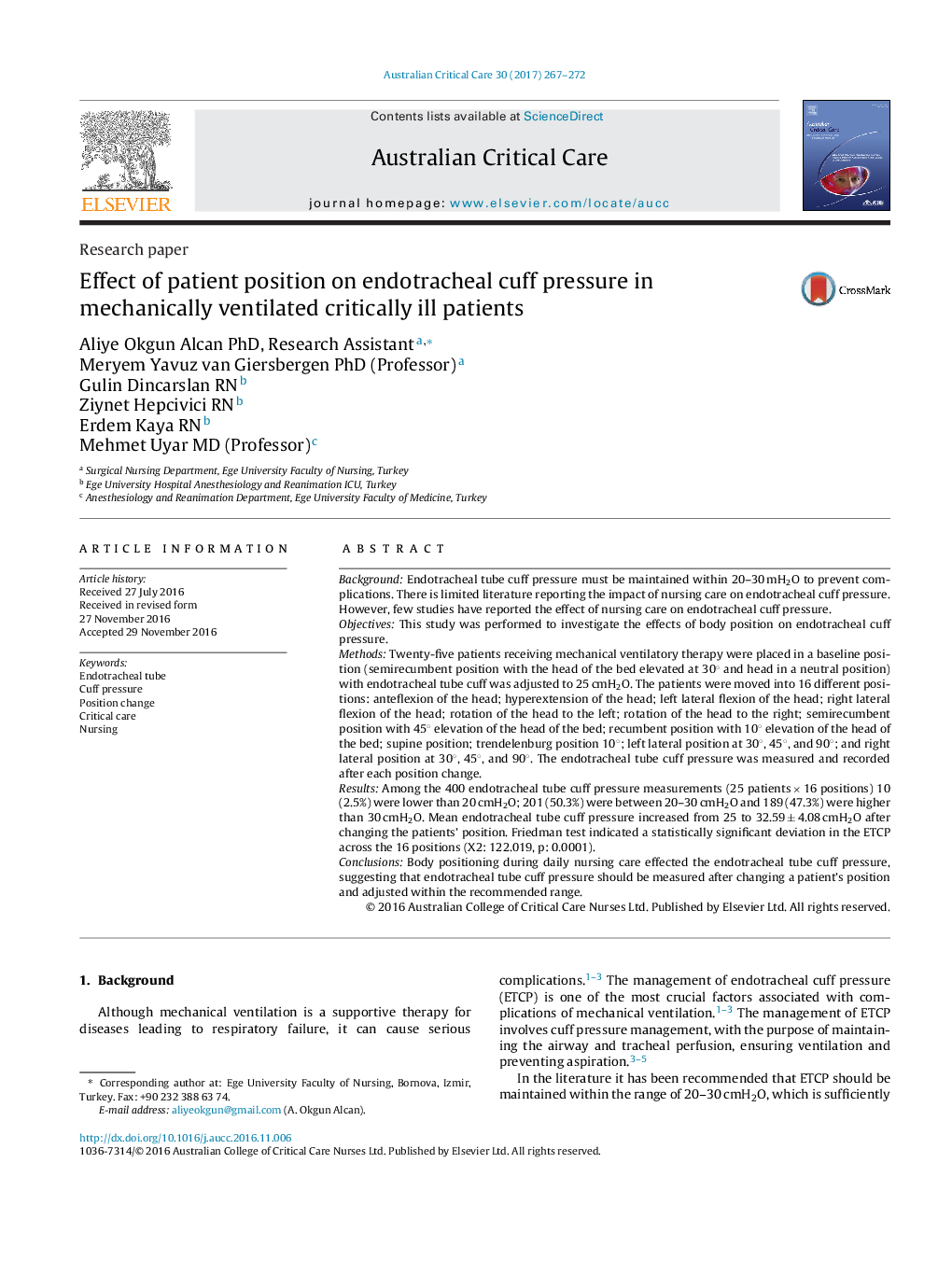| کد مقاله | کد نشریه | سال انتشار | مقاله انگلیسی | نسخه تمام متن |
|---|---|---|---|---|
| 5562848 | 1562785 | 2017 | 6 صفحه PDF | دانلود رایگان |
BackgroundEndotracheal tube cuff pressure must be maintained within 20-30 mH2O to prevent complications. There is limited literature reporting the impact of nursing care on endotracheal cuff pressure. However, few studies have reported the effect of nursing care on endotracheal cuff pressure.ObjectivesThis study was performed to investigate the effects of body position on endotracheal cuff pressure.MethodsTwenty-five patients receiving mechanical ventilatory therapy were placed in a baseline position (semirecumbent position with the head of the bed elevated at 30° and head in a neutral position) with endotracheal tube cuff was adjusted to 25 cmH2O. The patients were moved into 16 different positions: anteflexion of the head; hyperextension of the head; left lateral flexion of the head; right lateral flexion of the head; rotation of the head to the left; rotation of the head to the right; semirecumbent position with 45° elevation of the head of the bed; recumbent position with 10° elevation of the head of the bed; supine position; trendelenburg position 10°; left lateral position at 30°, 45°, and 90°; and right lateral position at 30°, 45°, and 90°. The endotracheal tube cuff pressure was measured and recorded after each position change.ResultsAmong the 400 endotracheal tube cuff pressure measurements (25 patients Ã 16 positions) 10 (2.5%) were lower than 20 cmH2O; 201 (50.3%) were between 20-30 cmH2O and 189 (47.3%) were higher than 30 cmH2O. Mean endotracheal tube cuff pressure increased from 25 to 32.59 ± 4.08 cmH2O after changing the patients' position. Friedman test indicated a statistically significant deviation in the ETCP across the 16 positions (X2: 122.019, p: 0.0001).ConclusionsBody positioning during daily nursing care effected the endotracheal tube cuff pressure, suggesting that endotracheal tube cuff pressure should be measured after changing a patient's position and adjusted within the recommended range.
Journal: Australian Critical Care - Volume 30, Issue 5, September 2017, Pages 267-272
